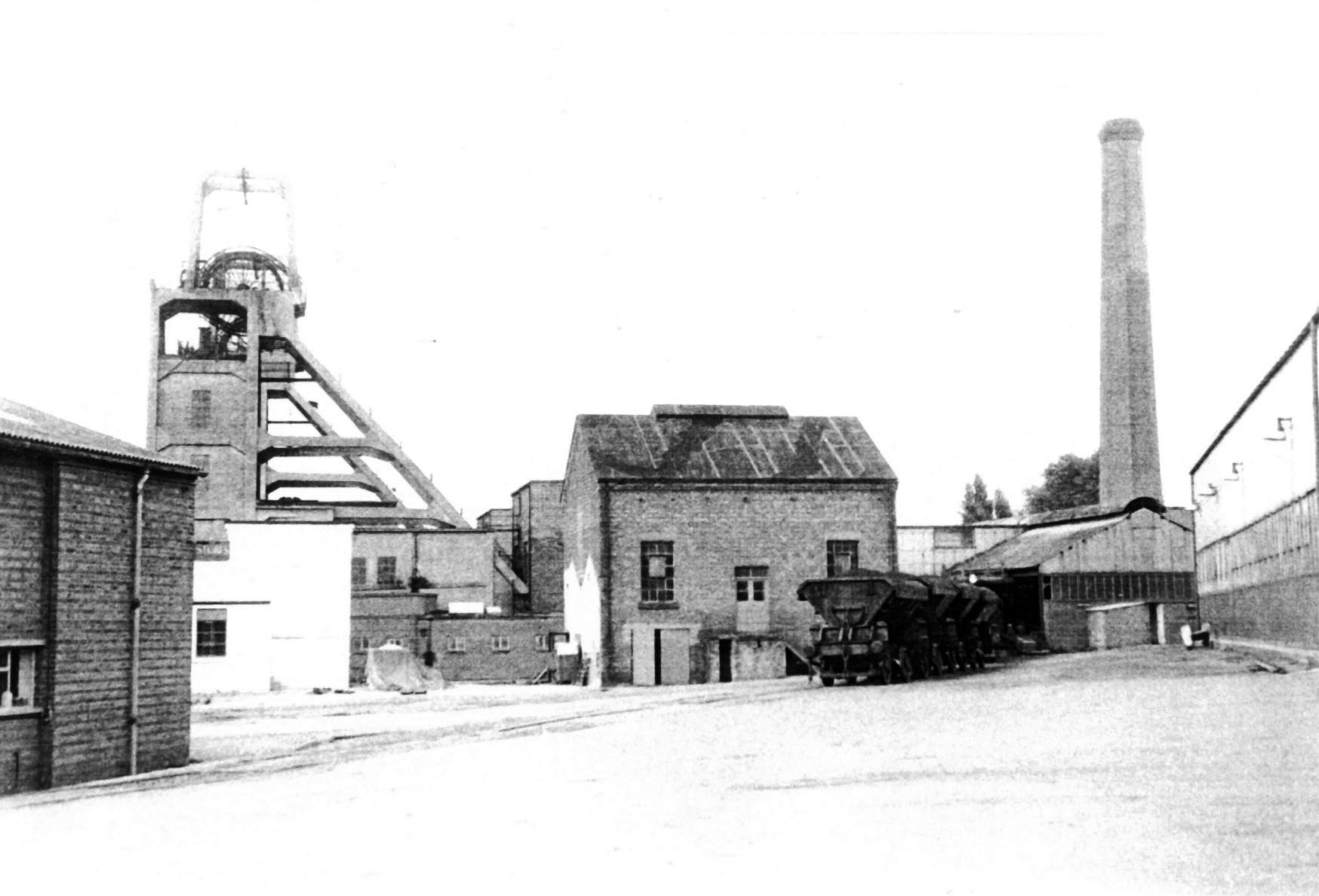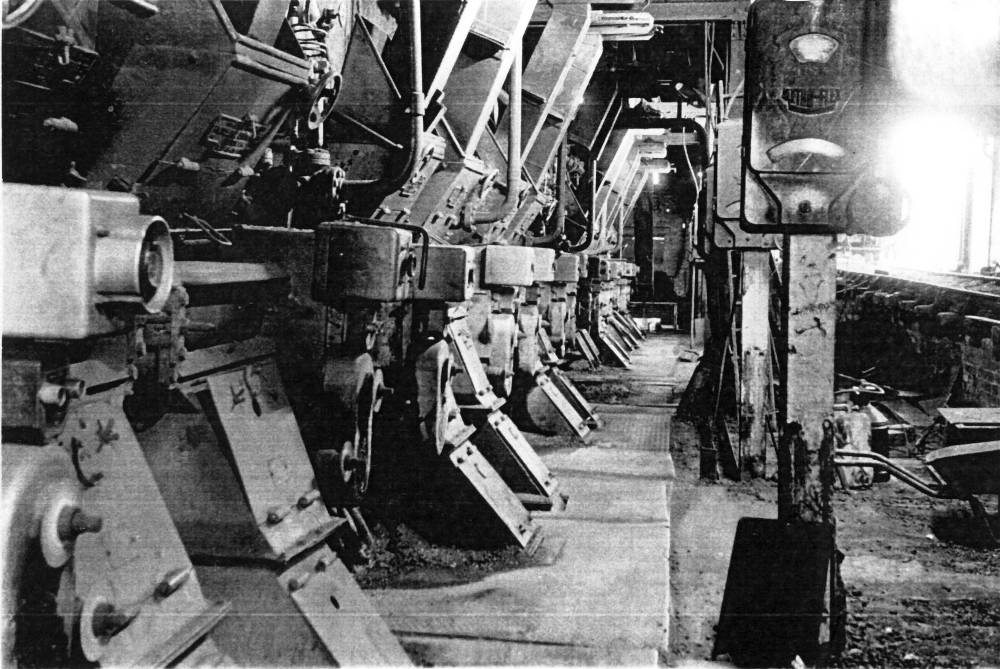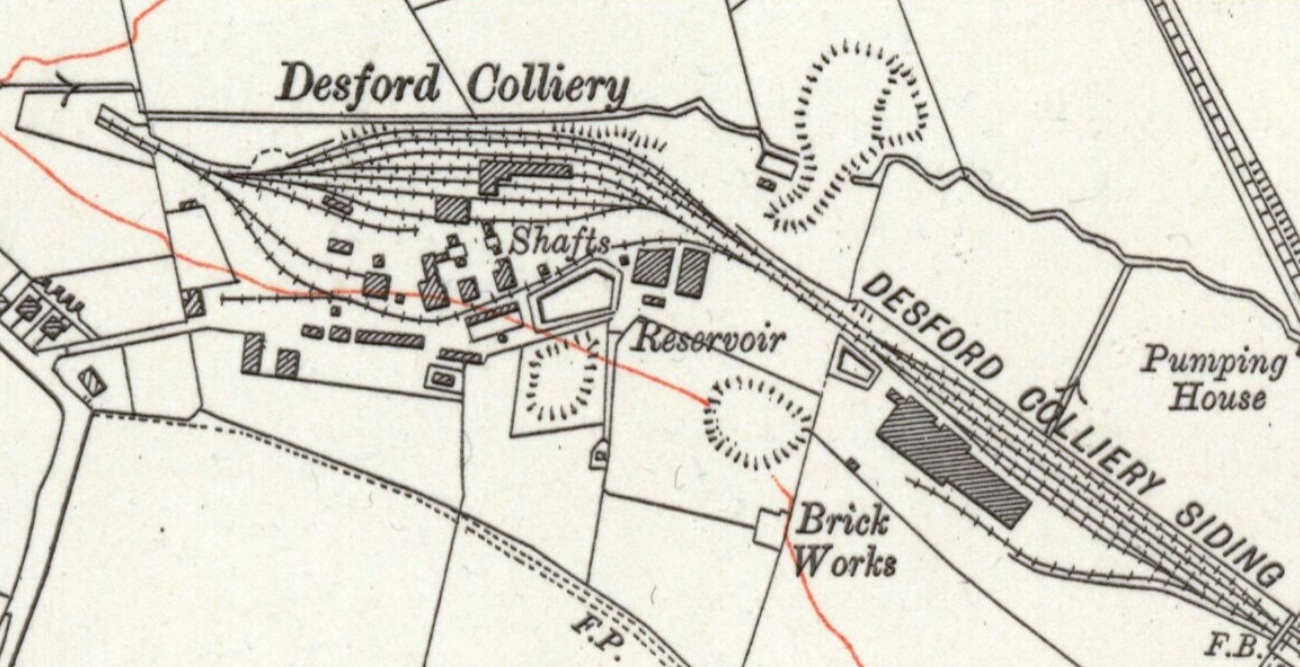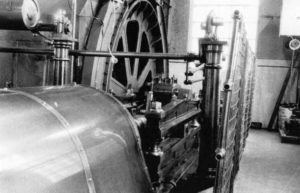DESFORD COLLIERY (SK 459068), MERRYLEES DRIFT (SK 468058)

General view of colliery showing the headgear at No.2 (upcast) Shaft. Side-tip wagons with coal for the boilers. G. Hayes 1973
Desford Colliery was the most southerly of the “deep” collieries in the Eastern Basin of the Leicestershire coalfields. Probably because of the successful discoveries of workable coal seams below the New Red Sandstones at Ibstock and Bagworth during the 1820’s, efforts were made to find seams further south during the 1830’s.
Borings in the neighbourhood of Barlestone and Newbold Verdon proved a thick coal seam at 105 yards below the surface. No action was taken in establishing a colliery at this time and it was 1874 before further explorations were made. Borings were put down at Lindridge and Newtown Unthank, to the north-west and north east of Desford village which proved five seams at between 100 and 133 yards below the surface. A shaft was sunk at Lindridge but progress was desultory and the project folded in 1887.
A newly formed Desford Coal Company Ltd began sinking two shafts at the end of the nineteenth century at a new location some 1½ miles south east of the already long established Bagworth Colliery. This proved to be a successful undertaking, continuing until 1984.
Near to the end of World War 2, two drifts were driven from the surface at Merrylees, almost a mile south east of Desford Colliery itself. This work was undertaken by the Desford Coal Co. Ltd. and was the subject of a Paper by A.D. Butterley and G.H Mitchell in the Transactions of the Institution of Mining Engineers,. Vol. civ., p.703. Merrylees was in operation until the early 1970’s and became notorious for the extensive damage to property in parts of Barlestone and Newbold Verdon, which the underground workings caused.
Winding – No.1 Pit was the downcast and coal winding shaft. The winding engine was a twin cylinder horizontal built by Wood & Gee, Barley Brook Foundry, Wigan, 1901, Maker’s Nos. 975 and 976. It was the practice of Wood & Gee to number each side of the engine separately. Originally built with cylinders fitted with Cornish valves the engine was rebuilt in the early 1950’s by the Worsley Mesnes Ironworks, Wigan with piston valve cylinders 26in. x 54in. The piston valves were actuated by Stephenson’s link motion. a parallel winding drum was mounted on the crankshaft and this was 11ft. 4in. diameter by 5ft. 10½ins. wide. A brake path was provided on each side of the drum. The brakes were calliper pattern operated by Markham’s spring system. These brakes were fitted in 1966.
No.2 Pit was the upcast ventilation shaft for the colliery and was used for winding men and materials. The winding engine was a twin cylinder horizontal made by Wood & Gee in 1902, Nos. 1001 and 1002. Other details were as No.1 Pit winding engine.
Both engines were fitted with Melling’s (Worsley Mesnes) pneumatic overwind/overspeed controller and Worsley Mesnes brake engines.
The engines were of traditional flat-bed construction with 4-bar cross-head guides.
Winding rope speed was 37 feet per second at the governed 62 revolutions per minute of the crankshaft. The winding ropes were locked coil pattern 1¼ inches diameter.
When electrical power was generated at the colliery, the winding engines exhausted to a steam accumulator adapted from an old Lancashire boiler made by Hawksley & Wild of Sheffield. This was out of use by 1973 and the engines exhausted to atmosphere.
Cage decking gear was operated by compressed air supplied from an electrically driven compressor. A stand-by steam driven compressor was located in the basement of No.2 engine house. This was made by Messrs Reader of Nottingham. Motive power was a single cylinder inverted vertical high speed enclosed engine.
No.2 Pit steam winding engine was replaced by an electric winder in 1975 and No.1 Pit engine followed suit in 1976. Both of the replacement electric winders had previously seen service at other collieries.

The “firehole”, showing Danks’s chain grate mechanical stokers and automatic ash extractors. Geoff Hayes 1973
Boilers – Nine Lancashire boilers were installed having a working pressure of 100 psi. A vertical tube economiser was fitted in the main flue to the chimney.
By 1973, eight boilers had been fitted with Danks’ chain grate mechanical stokers combined with forced draught. The ninth boiler was out of use. An overhead conveyor supplied coal to the stoker hoppers and automatic ash extractors were fitted under the grates.
Feed water was supplied to the boilers by two Weir SIMPLEX vertical direct acting pumps.
The boilers were served by an octagonal section brick chimney and were fully housed under cover.
| Seams Worked (1952) | High and Upper Main, Middle Lount, Yard and Lower Main |
| Workforce (1952) | 1492 Underground, 390 Surface |
| CLOSURE | 1984 |
Copyright © NMRS Records: Geoff Hayes Collection

OS Map, Leicestershire XXX.NW 1928
Reproduced by permission of the National Library of Scotland


